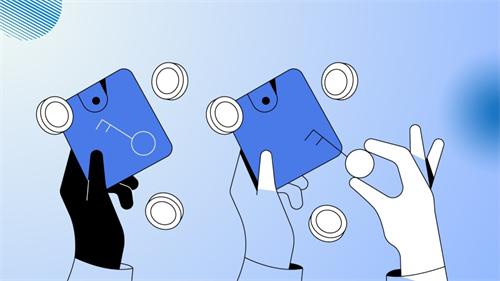The Hidden Cost of Convenience: How Subscription Services Drain Your Wallet

"Everything can be subscribed to" has become a fitting description of modern life. You're probably used to paying monthly fees for music, videos, fitness apps, online learning platforms, or even coffee capsules and razors. These services may seem affordable, flexible, and easy to use—but when you finally sit down to go through your bills, you might be shocked to find that your wallet is quietly being emptied by these seemingly “harmless” subscriptions.
Why Have Subscriptions Become the Darling of the Times?
Since smartphones became essential to daily life, people have grown used to using a single device to access everything: music, movies, e-books, audiobooks, fitness classes, and even therapy. This shift has fueled a massive digital content market, and subscriptions have emerged as the most convenient and stable bridge between users and content.
More importantly, digital content has an extremely low marginal cost. Once an album is uploaded to a server, it doesn’t matter if it has one listener or ten million—there’s virtually no additional cost to the platform. Compared to one-time purchases, subscriptions provide continuous and predictable revenue. This cost structure has encouraged more companies to adopt the subscription model, not only for content and software but even for physical products.
From “Ownership” to “Rental”: The New Nature of Subscriptions
The subscriptions we once knew were straightforward—like a yearly magazine or newspaper. Even if you didn’t renew, the past issues you collected remained yours. Today’s subscriptions are different. They resemble rentals.
For example, when you purchase a year-long music subscription, you gain unlimited access to a library of songs during that period. But the moment your subscription expires, access is instantly revoked. You don’t “own” any content—you’re simply “renting” a window of access.
This shift from ownership to rental poses a problem: once the subscription stops, all your previous payments vanish with it. The convenience you once enjoyed becomes a long-term dependency.
How Platforms Subtly Make You Willingly Pay
The subscription model may look simple, but platforms have mastered various psychological tricks:
- Auto-Renewals: Almost all services enable auto-renewal by default, and some even hide the cancellation path. Even if you’ve stopped using the service, forgetting to cancel means continued charges.
- Free Trials: One month, three months, or even longer free trials seem like a great deal—but they’re a form of “boiling the frog.” Once you get used to the service, it's hard to give it up.
- Bundled Deals: Music, video, and cloud storage services are often bundled together. While it may seem cheaper as a package, you're actually paying for things you rarely use.
- Reward Systems: Watch for a certain number of hours to unlock features, complete tasks for points and gifts… These gamified features increase engagement and make you more willing to pay.
What platforms truly want isn't just a one-time impulse purchase, but a customer who continues renewing indefinitely and finds it hard to cancel.
Why Subscriptions Are a “Sure Win” for Businesses
- Customer Lock-In: Once subscribed, users provide predictable, stable income and reduce revenue volatility.
- Refined Operations: With data analysis, platforms can recommend content that perfectly matches your preferences, making it harder to leave.
- Product Optimization: Ongoing user activity generates a wealth of behavioral data, helping companies fine-tune their offerings and improve satisfaction and retention.
Compared to one-time sales, subscription services offer more sustainable revenue, greater customer loyalty, and better profit margins.
The Real Question: Do We Even Use All These Subscriptions?
This brings us to one of the most overlooked hidden costs: continuing to pay for services we barely use.
You might have subscribed to a platform just to watch one hit show but forgot to cancel it afterward. You downloaded a fitness app but only opened it once the whole month. You pay for five video streaming services, though most of their content overlaps. These small, recurring charges often become an invisible financial burden.
Studies show that many people can’t even name all the services they’ve subscribed to—let alone know how much they’re spending each month. Most of these charges happen silently in the background, unnoticed until you review your year-end financial statement.
How to Avoid Falling into the “Subscription Trap”
- Set a “Subscription Check-Up Day”
Pick a specific day each month—like the 15th—to review your subscriptions. Add reminders on your phone, computer, or physical calendar. Ask yourself: do I still use this? Is it worth renewing?
- Use a Subscription Ledger
Track all your subscriptions with tools like Excel, Notion, or budgeting apps. Record the service name, cost, billing date, and platform. Set alerts—even a simple Google Calendar event can help prevent forgetfulness.
- Try the “Payment Isolation Method”
Open a separate bank account or payment method just for subscriptions. Disable password-free payments so every charge requires active confirmation. It creates a “financial firewall” against passive spending.
- Activate a “Smart Manager”
Let tech tools help. Set up iOS Shortcuts to scan your email on the 1st of each month for “subscription” keywords and generate a summary. Or use subscription tracking apps like Truebill or Bobby to automatically identify and monitor your subscriptions.
Convenience Comes at the Cost of Unnoticed Spending
No one can deny that subscription services have brought great convenience and freedom of choice to our lives. But this “ubiquitous convenience” can also become a subtle yet persistent financial burden. When small fees of $10 or $15 repeat dozens of times, you may unknowingly fall into a consumption black hole.
The smartest way to consume isn’t rejecting subscriptions altogether—but becoming a conscious, strategic subscriber. After all, it's the “invisible expenses” that most easily catch us off guard.



